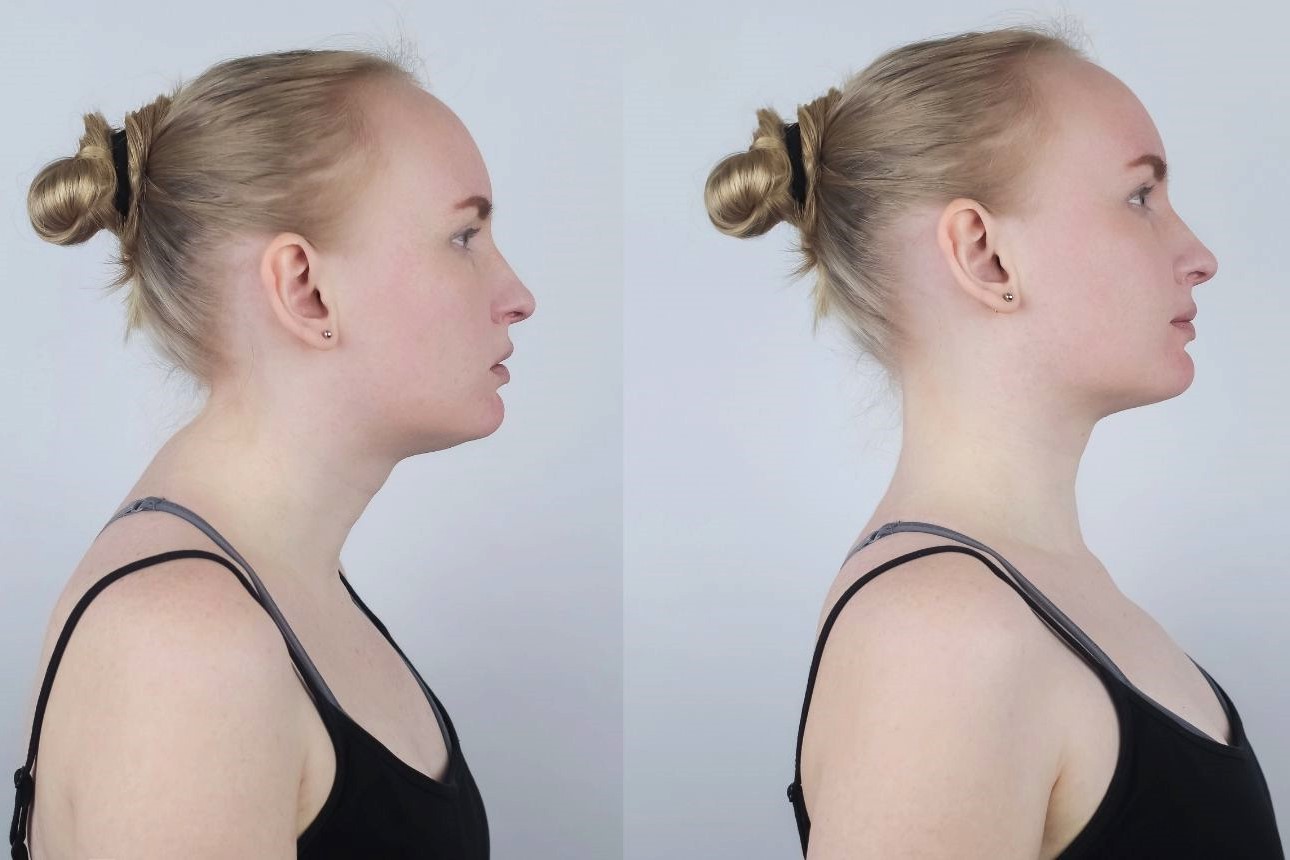Home>Health and Wellness>How To Crack Your Neck


Health and Wellness
How To Crack Your Neck
Published: March 3, 2024
Learn safe and effective techniques for cracking your neck to relieve tension and improve overall health and wellness. Discover the benefits and risks of neck cracking.
(Many of the links in this article redirect to a specific reviewed product. Your purchase of these products through affiliate links helps to generate commission for Noodls.com, at no extra cost. Learn more)
Table of Contents
Introduction
Cracking your neck is a common habit for many people seeking relief from stiffness or tension. The satisfying release of tension and the accompanying sound can be quite appealing. However, it's important to understand the potential risks and benefits associated with this practice. In this article, we will delve into the anatomy of the neck, explore the risks and benefits of cracking your neck, discuss techniques for safely cracking your neck, and provide guidance on when to seek professional help.
The neck, also known as the cervical spine, is a complex structure consisting of seven vertebrae that support the weight of the head and facilitate its range of motion. It also houses the spinal cord, which is a crucial component of the central nervous system. Understanding the intricate anatomy of the neck is essential for comprehending the potential impact of cracking it.
While cracking your neck may provide temporary relief from tension and discomfort, it's important to be aware of the potential risks involved. Improper techniques or excessive force can lead to muscle strain, ligament damage, or even injury to the arteries in the neck. On the other hand, when done correctly, neck cracking may offer relief by releasing built-up pressure in the joints and reducing stiffness.
In the following sections, we will explore the various techniques for safely cracking your neck, emphasizing the importance of gentle and controlled movements. Additionally, we will highlight the warning signs that indicate the need for professional evaluation and emphasize the significance of seeking medical assistance when experiencing persistent discomfort or unusual symptoms.
By gaining a comprehensive understanding of the risks and benefits associated with cracking your neck, you will be equipped to make informed decisions about this practice. It's crucial to prioritize your safety and well-being while seeking relief from neck discomfort. With this in mind, let's delve into the intricate details of the neck's anatomy and the best practices for safely cracking it.
Understanding the anatomy of the neck
The neck, also known as the cervical spine, is a remarkable and intricate structure that plays a pivotal role in supporting the head and facilitating a wide range of movements. Comprising seven vertebrae, labeled C1 to C7, the cervical spine serves as the bridge between the head and the rest of the body. Each vertebra is separated by intervertebral discs, which act as shock absorbers and provide flexibility to the spine.
The cervical spine not only supports the weight of the head but also protects the delicate spinal cord, a crucial component of the central nervous system. The spinal cord, housed within the protective vertebral column, serves as the primary pathway for transmitting signals between the brain and the body. This intricate network of nerves enables the brain to communicate with various parts of the body, controlling movement, sensation, and bodily functions.
The neck is also home to numerous muscles, ligaments, and tendons that work in harmony to support the spine and facilitate movement. These soft tissues play a vital role in stabilizing the cervical spine and allowing for a wide range of motion, including flexion, extension, rotation, and lateral bending.
Furthermore, the neck houses the carotid arteries, which supply oxygenated blood to the brain, and the jugular veins, which carry deoxygenated blood back to the heart. These vital blood vessels are nestled amidst the intricate network of bones, muscles, and nerves, highlighting the delicate and interconnected nature of the neck's anatomy.
Understanding the complex interplay of bones, muscles, ligaments, tendons, nerves, and blood vessels within the neck provides valuable insight into the potential impact of cracking this delicate area. The intricate nature of the neck's anatomy underscores the importance of exercising caution and mindfulness when considering any practices that directly affect this vital region of the body.
By gaining a deeper understanding of the intricate anatomy of the neck, individuals can develop a heightened awareness of the potential risks and benefits associated with practices such as neck cracking. This knowledge empowers individuals to make informed decisions about their neck health, prioritizing safety and well-being while seeking relief from discomfort and tension.
Risks and benefits of cracking your neck
Cracking your neck, also known as cervical manipulation, can elicit a range of responses from individuals. Some find it to be a satisfying and relieving experience, while others may express concerns about its potential risks. Understanding the nuanced interplay of risks and benefits associated with neck cracking is essential for making informed decisions about this practice.
Potential Risks
- Muscle Strain: Excessive or forceful neck manipulation can strain the surrounding muscles, leading to discomfort and potential injury.
- Ligament Damage: Aggressive or improper neck cracking may cause damage to the ligaments that support the cervical spine, compromising its stability.
- Arterial Injury: In rare cases, forceful manipulation of the neck can result in injury to the arteries, potentially disrupting blood flow to the brain and leading to serious consequences.
- Joint Instability: Frequent or forceful neck cracking may contribute to joint instability, increasing the risk of long-term issues.
Potential Benefits
- Temporary Relief: Cracking the neck may provide temporary relief from stiffness and tension, offering a sense of relaxation and comfort.
- Pressure Release: The audible sound accompanying neck cracking is attributed to the release of built-up pressure within the joints, potentially alleviating discomfort.
- Mobility Improvement: Some individuals report improved neck mobility and range of motion following neck cracking, contributing to a sense of flexibility and ease.
It's important to approach neck cracking with caution and mindfulness, considering both the potential risks and benefits. While some individuals may experience temporary relief and a sense of comfort from neck cracking, it's crucial to be mindful of the potential risks associated with aggressive or improper manipulation. Prioritizing gentle and controlled movements, if choosing to crack the neck, can help mitigate potential risks and enhance the likelihood of experiencing temporary relief.
By acknowledging the potential risks and benefits of neck cracking, individuals can make informed choices regarding their neck health. It's essential to prioritize safety and well-being, seeking professional guidance if experiencing persistent discomfort or concerns about neck mobility. Understanding the nuanced dynamics of neck cracking empowers individuals to approach this practice with a heightened sense of awareness and mindfulness, ultimately contributing to their overall well-being.
Read more: How To Crack Your Ankle
Techniques for safely cracking your neck
When it comes to cracking your neck, it's crucial to prioritize safety and mindfulness. If you choose to crack your neck, it's essential to employ gentle and controlled techniques to minimize the risk of potential injury. Here are some safe and effective techniques for cracking your neck:
-
Neck Rotation:
- Sit or stand in a comfortable position with your spine aligned.
- Slowly turn your head to the right until you feel a gentle stretch.
- Hold the position for a few seconds, then return your head to the center.
- Repeat the same gentle rotation to the left side.
- Avoid forcing the movement or overextending your neck.
-
Neck Tilt:
- Begin in a relaxed sitting or standing position.
- Gently tilt your head to the right, aiming to bring your ear closer to your shoulder.
- Hold the stretch for a brief moment, then return your head to the center.
- Repeat the gentle tilt to the left side, ensuring a comfortable stretch without strain.
-
Self-Massage:
- Using your fingertips, apply gentle pressure to the muscles at the base of your skull.
- Slowly massage the area in circular motions, focusing on areas of tension or discomfort.
- This technique can help alleviate muscle tightness and promote relaxation without the need for forceful manipulation.
-
Chin Tucks:
- Sit or stand with your spine in a neutral position.
- Gently tuck your chin towards your chest, feeling a subtle stretch at the back of your neck.
- Hold the position briefly before returning to the starting position.
- This gentle movement can help release tension in the neck and upper back.
-
Slow and Controlled Movements:
- Regardless of the technique you choose, prioritize slow and controlled movements.
- Avoid sudden or jerky motions that could strain the muscles or ligaments in your neck.
- Listen to your body and stop any movement that causes discomfort or pain.
It's important to approach these techniques with caution and attentiveness to your body's signals. If you experience persistent discomfort or have concerns about neck mobility, it's advisable to seek professional guidance from a healthcare provider or a qualified physical therapist. Prioritizing gentle and mindful movements can contribute to a safer and more effective experience when cracking your neck, promoting overall neck health and well-being.
When to seek professional help
While cracking your neck may offer temporary relief from stiffness or tension, it's essential to recognize the signs that indicate the need for professional evaluation and guidance. Seeking professional help is crucial when experiencing persistent discomfort, unusual symptoms, or concerns about neck mobility. Here are the key indicators that warrant seeking assistance from a healthcare provider or a qualified physical therapist:
Persistent Discomfort:
If you consistently experience discomfort, pain, or stiffness in your neck, despite attempting various self-care measures, it's important to seek professional evaluation. Persistent discomfort may indicate underlying issues that require expert assessment and targeted intervention. A healthcare provider can conduct a thorough examination, potentially including imaging studies, to identify the root cause of the discomfort and develop a tailored treatment plan.
Unusual Symptoms:
Unusual symptoms such as numbness, tingling, or weakness in the arms, hands, or fingers should not be overlooked. These symptoms may signal nerve compression or other neurological issues that necessitate prompt attention. Ignoring such symptoms can lead to further complications, making it imperative to consult a healthcare provider for a comprehensive assessment and appropriate management.
Read more: How To Relieve A Crick In Your Neck
Limited Range of Motion:
If you notice a significant reduction in your neck's range of motion, accompanied by stiffness or difficulty performing daily activities, it's advisable to seek professional help. A qualified physical therapist can assess your neck mobility, identify any restrictions or imbalances, and design targeted exercises and interventions to improve flexibility and function.
History of Trauma:
Individuals with a history of neck trauma, such as whiplash from a motor vehicle accident or a sports-related injury, should prioritize professional evaluation. Even if the initial symptoms seemed minor, underlying structural damage or soft tissue injuries may manifest over time, necessitating expert assessment and appropriate rehabilitation.
Recurring Discomfort After Neck Cracking:
If you consistently experience discomfort or tension shortly after cracking your neck, it's essential to consult a healthcare provider. Recurring discomfort following neck cracking may indicate an underlying issue that requires professional attention. A thorough evaluation can help identify any potential musculoskeletal or neurological concerns and guide the implementation of targeted interventions for long-term relief.
Overall Well-Being:
Prioritizing your overall well-being includes seeking professional help when you have concerns about your neck health. Whether it's persistent discomfort, unusual symptoms, or limitations in neck mobility, consulting a healthcare provider or a qualified physical therapist demonstrates a proactive approach to maintaining optimal neck health and function.
By recognizing these indicators and proactively seeking professional help, individuals can address potential issues early, receive targeted interventions, and promote their overall neck health and well-being. Professional evaluation and guidance play a pivotal role in identifying and managing underlying concerns, ultimately contributing to improved neck function and a better quality of life.
Read more: How To Get Rid Of A Crick In Your Neck
Conclusion
In conclusion, the practice of cracking your neck, also known as cervical manipulation, is a topic that warrants careful consideration and mindfulness. Understanding the intricate anatomy of the neck, including the delicate interplay of bones, muscles, ligaments, nerves, and blood vessels, provides valuable insight into the potential impact of neck cracking. While some individuals may experience temporary relief and a sense of comfort from neck cracking, it's essential to acknowledge the potential risks associated with aggressive or improper manipulation.
By exploring the risks and benefits of neck cracking, individuals can make informed decisions about their neck health. It's crucial to prioritize safety and well-being, seeking professional guidance if experiencing persistent discomfort or concerns about neck mobility. The nuanced dynamics of neck cracking underscore the importance of approaching this practice with a heightened sense of awareness and mindfulness, ultimately contributing to overall well-being.
When considering techniques for safely cracking your neck, it's paramount to prioritize gentle and controlled movements. Neck rotation, neck tilt, self-massage, chin tucks, and slow, controlled movements offer safe and effective approaches to alleviate stiffness and tension. Emphasizing caution and attentiveness to your body's signals can contribute to a safer and more effective experience when cracking your neck, promoting overall neck health and well-being.
Recognizing the signs that indicate the need for professional evaluation and guidance is crucial. Persistent discomfort, unusual symptoms, limited range of motion, a history of trauma, and recurring discomfort after neck cracking are key indicators that warrant seeking assistance from a healthcare provider or a qualified physical therapist. Proactively addressing potential issues and receiving targeted interventions can contribute to improved neck function and a better quality of life.
In essence, the decision to crack your neck should be approached with mindfulness, caution, and a deep understanding of the potential risks and benefits. Prioritizing safety, seeking professional guidance when needed, and embracing gentle and controlled techniques can contribute to a balanced approach to neck health. By integrating these principles into your approach to neck cracking, you can prioritize your well-being and make informed choices that support the health and function of this vital area of the body.












